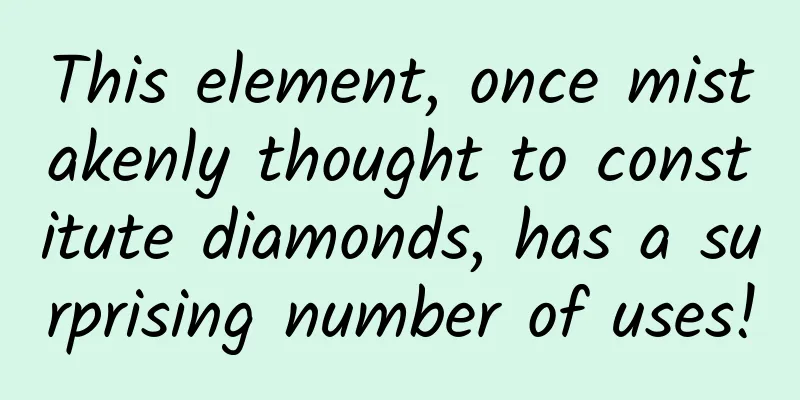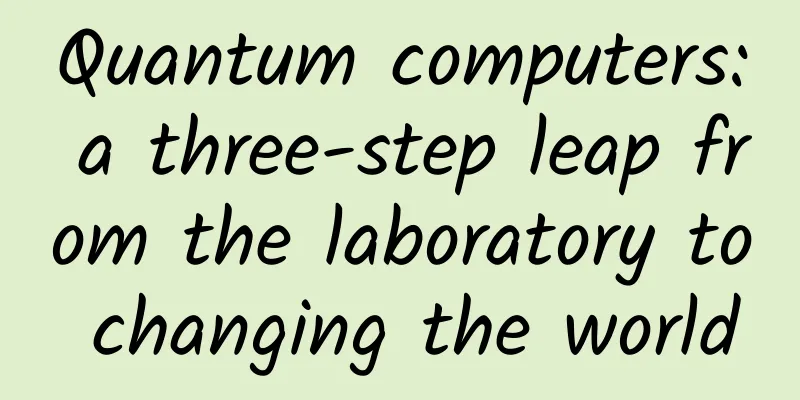This element, once mistakenly thought to constitute diamonds, has a surprising number of uses!

|
Recently, a team of undergraduate students from Civil Aviation University of China successfully developed a high-temperature resistant adhesive (up to 1200°C) suitable for zirconium oxide and titanium alloys. This adhesive effectively solves the problem of high-temperature bonding between ceramic alloys and has broad application prospects in the aerospace field. Zirconia is known for its high melting point and low thermal expansion, and is the main raw material for artificial diamonds. As the main element of zirconia, zirconium has been considered the main component of diamonds for a long time. In fact, scientists discovered and named zirconium only more than 200 years ago. In recent decades, it has become popular and widely used in light industry, military industry, aerospace and other fields. It is known as the "number one metal in the atomic energy age." Natural red zircon (source see watermark) "Golden Gem" is very popular In the summer of 1789, German scientist Klaproth became very interested in something called "golden gemstone". He knew that it was a natural mineral containing silicate, which would show beautiful light after cutting, so Westerners had always regarded it as a special soft diamond. More than 2,000 years ago, the ancient Roman poet Ovid said in his novel Metamorphoses that the blood-red "Zircon" was a lucky stone protected by the sun god. The English name of "Zircon" comes from Persian, which originally means "golden light". In fact, "Zircon" appears in many colors: in addition to blood red, there are also colorless, yellow, purple, blue, etc. The beautiful "Zircon" was loved by people in ancient Greece, ancient Rome, ancient India and other countries. The Bible said that it was one of the 12 gems worn by priests. It is said that wearing it can cure skin diseases and prevent being struck by lightning... Zircon of various colors (see watermark for source) Another reason why "golden gems" are so popular among Westerners is that they are rare and difficult to mine. They are usually found below the sea level, and the pits used for mining are often flooded. In Sri Lanka, where they are abundant, people offer sacrifices before mining "golden gems" to pray for peace. Since the Middle Ages, most natural "golden gems" have entered the treasure houses of collectors. From discovery to purification Klaproth, who had extensive experience in ore research, asked a collector friend for a small "gold gem". He heated it with sodium hydroxide at high temperature, then put the product into a hydrochloric acid solution for precipitation, and filtered out silicon, sodium and impurities through experiments, and finally obtained an unknown oxide (precipitate). He further studied and found that this oxide was insoluble in alkali solution and ordinary acid solution, and its chemical properties were very stable. Klaproth, the "Father of Analytical Chemistry" (Photo source: Chemistry Network) Klaproth, who was cautious by nature, consulted a lot of information, but could not figure out the unknown oxide he had just found. He divided the oxide into two parts and sent them to French chemists Morueau and Vauquelin respectively. They wrote back saying that they had never seen this thing and it might contain unknown elements. Klaproth asked a collector friend for another very small "gold gem" and after conducting the same experiment, he determined that there was an unknown element in the unknown oxide that was completely different from carbon. Based on the Persian meaning of "golden light", he named the element "Zirconium" with the chemical symbol "Zr" . A few years later, when Western learning spread to the East, scientists in the late Qing Dynasty translated this element as "zirconium". The "gold gem" is the famous zircon. Zirconium atom (source see watermark) It took only half a year to discover zirconium, but more than a century to purify it. 35 years later, in 1824, the famous Swedish chemist Bezilias used potassium fluorozirconate and potassium to heat and react, and extracted zirconium with a purity of 93%. This record remained for a century. In 1925, Dutch scientists De Boer and Acker used electric heating wire to decompose zirconium tetraiodide to produce 99% pure zirconium. Nearly 20 years later, under the guidance of scientist Kesuer, the staff of the U.S. Bureau of Mines successfully experimented with the method of heating zirconium tetrachloride with magnesium to obtain pure zirconium in 1944, and began to produce metallic zirconium on a large scale. It was also from this year that many developed countries began to realize the importance of zirconium and invested manpower, material and financial resources in related research and experiments. Rare metals have a wide range of uses Zirconium is an important rare metal with properties such as ultra-high melting point, ultra-hardness, and super corrosion resistance . It is widely used in light industry, military industry, aerospace industry and other fields. Zirconium block (Source: Rare Metals Network) In industry, zirconium can be used for gettering, metallurgy, casting alloys, etc. Getter is one of the largest light industrial uses of zirconium. At room temperature, the surface of pure zirconium absorbs oxygen to form a shiny oxide film, which looks very similar to steel. At high temperatures, zirconium absorbs a large amount of oxygen, hydrogen and other gases, making it a good hydrogen storage material. Zirconium can be used for deoxidation and desulfurization, and is known as the "vitamin" of the metallurgical industry. Zirconium-based additions of tin, niobium and other metals can give full play to the corrosion resistance of zirconium to produce zirconium-containing alloys for the manufacture of various precision parts. In the military industry and aerospace, zirconium is not only an important raw material for the manufacture of tanks, cannons, armored vehicles, etc., but also an indispensable material for the development of the atomic energy industry. It is used in the manufacture of large nuclear power plants, nuclear submarines, spacecraft, rockets, etc. The most popular application of zirconium is in the 5G field. Zirconium oxide powder is one of the raw materials for key electronic components such as the backplane, filter, and fingerprint recognition module of 5G mobile phones . Various applications show that zirconium is well-deserved to be the "number one metal in the atomic energy age." my country's zirconium industry is ready to take off Wide applications lead to large demand, and large demand leads to its increasing importance. As countries around the world pay more attention to zirconium metal, zirconium resources are becoming a hot spot and focus in the international mineral market. Although my country's zirconium industry started late, it has developed rapidly. In the 1970s, influenced by foreign zirconium mining and zirconium oxide research, the country began to study the practicality of zirconium oxide, and then determined the production process of producing zirconium oxide by reacting sodium hydroxide with zirconium chloride. In 1978, the country established Jiangsu Yixing Chemical Plant, which was the first zirconium oxide production plant in my country. This move also became a turning point in the development of my country's zirconium industry. Today, there are zirconium production bases in Wenchang, Hainan, Zhanjiang, Guangdong and other places. my country has a small reserve of zirconium resources. Currently, there are only 500,000 tons of zirconium metal in China, accounting for 0.6% of the world's total. However, my country is the world's largest zirconium resource demander, with an annual demand of more than 1.2 million tons (2020). Therefore, zirconium metal has mainly relied on imports in the past few decades. Zirconium mining pit (source see watermark) In response to the above situation, experts proposed three solutions, including improving mining technology, increasing exploration efforts, optimizing production processes and making applications more reasonable. The third solution has a more obvious practical effect. In 2022, the Shanghai Institute of Ceramics, Chinese Academy of Sciences, made a breakthrough in the research of zirconium oxide transparent ceramics, and the high-temperature resistant glue developed by the Civil Aviation University of China team for zirconium oxide and titanium alloys mentioned above is also worth mentioning. I believe that as long as scientists and research teams work tirelessly and the industry is quickly upgraded, not only can my country's current situation of relying on imported zirconium be completely changed, but this rare metal that was once mistakenly believed to constitute diamonds will also play a greater and greater role. References: 1. "A Different Element Story: Counting the Uses of Zirconium", author Wang Jiang, "Nature-Chemistry" column 2. "Research Materials on the Microstructure and Mechanical Properties of Zirconium-based Amorphous Alloys", author Yu Jian, "Journal of Chang'an University: Natural Science Edition", Issue 2, 2008 3. Analysis of the Current Status of Zirconium Resources in my country and Suggestions for Sustainable Development, by Shen Wei, Zhang Fangfang, etc., China Mining, March 2016 Author: Wei Deyong, member of Shenzhen Writers Association, Guangdong |
<<: How are those who always do manicures doing now?
Recommend
Case analysis of the system of old employees mentoring new employees at Xueersi Online School!
Today's case study is about the system of men...
A well-known male singer died of cerebral hemorrhage after singing on stage! Be careful when singing with such people
Earlier, the media reported that Atsushi Sakurai,...
What? Pigeons can play table tennis?
Pigeons are a symbol of peace and " keeping ...
Detailed explanation of Android virtual machine Dalvik and ART
Android applications are written in Java/Kotlin. ...
Uncle Lei's "Data-based Operations in Action"
In the data age, whether it is product, operation...
Discussion from 4 aspects: Analysis of competitive products of financial diversion products (I)
The cooperation model of the financial traffic di...
Neither running nor jumping, this action is actually the most harmful to the knees?
Unannounced Inspections Half squat for 10 seconds...
It’s dangerous at heights, many people fell to their deaths! How to prevent high-fall accidents?
December 22, 2021 Xiangcheng District, Suzhou Cit...
WeChat Developer Guidelines
When developers develop official accounts, in add...
Which method should I choose to declare infant and child care expenses? What are the deduction ratios and standards?
To further reduce the tax burden on taxpayers and ...
Why do some people look old and some look young? The reason has finally been found
In our lives, some people seem to have "eate...
Why do octopuses spray (throw) things at each other?
Octopuses in Australia throw gravel at each other...
How did you get your first 1,000 users? Start with the stupid things!
The story begins with hotmail. In 1996, two engin...
The Pacing algorithm behind Facebook's advertising system
[[163141]] Last month, Facebook released its eye-...
Can drinking help you sleep? The harm of alcohol to sleep
Many people are used to drinking milk before goin...









